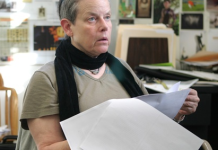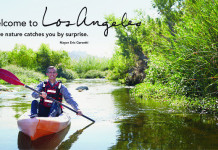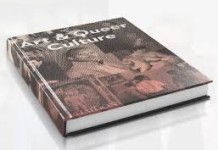“The Avant-Garde” – Catherine Lord, Artist / Art Historian

Recently announced: Velvetpark’s Top 25 Queer Women of 2013. According to Velvetpark’s description of the awards: “As with previous years, this is not a hierarchical list. These 25 represent a collection of women viewed on equal footing, each contributing to LGBTIQ visibility in the fields of the arts, activism, academia, and/or social equality. They are female-identified or non-gender binary persons who have created a critical work or whose body of work warranted attention this year.
“This year, Catherine Lord co-authored with Richard Meyer the most comprehensive queer art history book to date, Art and Queer Culture(Phaidon Press). Lord and Meyer have culled through every genre and movement from the late 19th C. to the present, from the neighborhoods of Holbron to Harlem, covering artists from Oscar Wilde to Jasper Johns, from Mickalene Thomas to Wu Tsang. They elucidate how queer lifestyle was/is not only an inspiration but the subject for the artists’ works. This history, as Lord and Meyer, conclude is not an evolution from outsider to assimilation into mainstream society, but a history of the liminal. The book finds queer art and artists existing between the cracks of high and low art, public and private life, between the deviant and the normal. This is work will be one for the college classroom and your bookshelf.
Continue reading “Catherine Lord: Velvetpark award”

